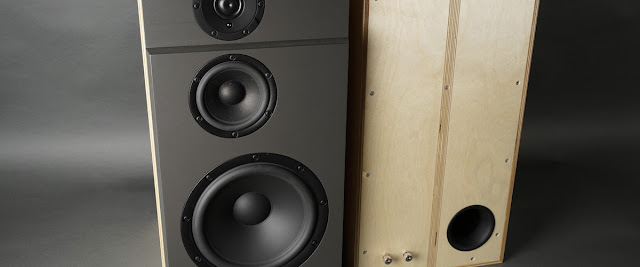A WAW and MLTL Part 2.

Time to take a closer look at this WAW and MLTL concept. Is it even worth the added complexity of a MLTL over a standard bass reflex alignment? There are a lot of software capable of simulating bass reflex enclosures but only a few for transmission lines. I will therefor use Hornresp for all simulations just to make the simulations comparable. Keep in mind that Hornresp does not include the impact of box losses in its simulations so the result might look a bit scarier than it actually turns out in real life.
This is a quick simulation of a bass reflex box in Hornresp. The box volume is set to 35 liters, the depth of the box 30 cm, the port area 50 cm2 and the length of the port 35 cm. The simulated response graph indicates a fairly flat response from 100 Hz almost down to 30 Hz at around 87.5 dB.
I don't know the exact Xmax and Pmax but this is a simulation with Pmax = 100 W and Xmax = 8 mm. These figures can now be compared to other alignments like TL and MLTL.
I added a couple of segments to get a MLTL and used the Loudspeaker Wizard to tune it for a flat response from 100 Hz and down. I had to increase S1 to 500 cm2. The driver offset is 50 cm, total line length 130 cm, the area of the port 110 cm2 and the length of the port 23 cm.
I also added some "fluff" at the beginning of the line.
And this is the simulated response. Quite flat from 200 Hz and down to around 35 Hz. The fundamental frequency is 35.2 Hz.
And simulated at Pmax.
To me this alignment looks very similar to the bass reflex simulated above. Not enough here to make me walk the extra mile building and tuning an MLTL over a bog standard BR.
Next option is to use the Loundspeaker Wizard to tune my initial TL trying to keep efficiency as high as possible and line length as short as possible. This is what I came up with. S1 300 cm2, S3 150 cm2, element offset 50 cm, total line length 160 cm with a fundamental frequency of 41.8 Hz.
And simulated at Pmax.
So what do I take away from all of this? In this case, not much to be gained with a MLTL over a regular BR alignment. The tapered TL is still quite compact with an efficiency of close to 90 dB. But it comes with a price, a higher fundamental frequency and a more uneven response. Is is worth those extra 2 dB? I am not sure.
Assume a baffle step loss of 6 dB and a room gain of 4 dB. I would have to attenuate the W5-2143 around 3 dB to level it with the ARGSUB840-4. I might get away with running the W5-2143 full-range without a filter but I would probably have to add a steep low-pass filter to the ARGSUB840-4. This can certainly be done but it is probably easier to stick the ARGSUB840-4 back into its closed box and drive it with the plate amp. Built in crossover, gain level, phase correction etc. Then use the W5-2143 for a pair of satellites, maybe even add a super tweeter for some upper end sparkle.
I was looking forward to cut some wood and this WAW/MLTL seemed like a fun project. But my previous experience with WAW has left me cautious. I still find TL and MLTL intriguing but I will put this project on a back burner and explore some other options instead.













